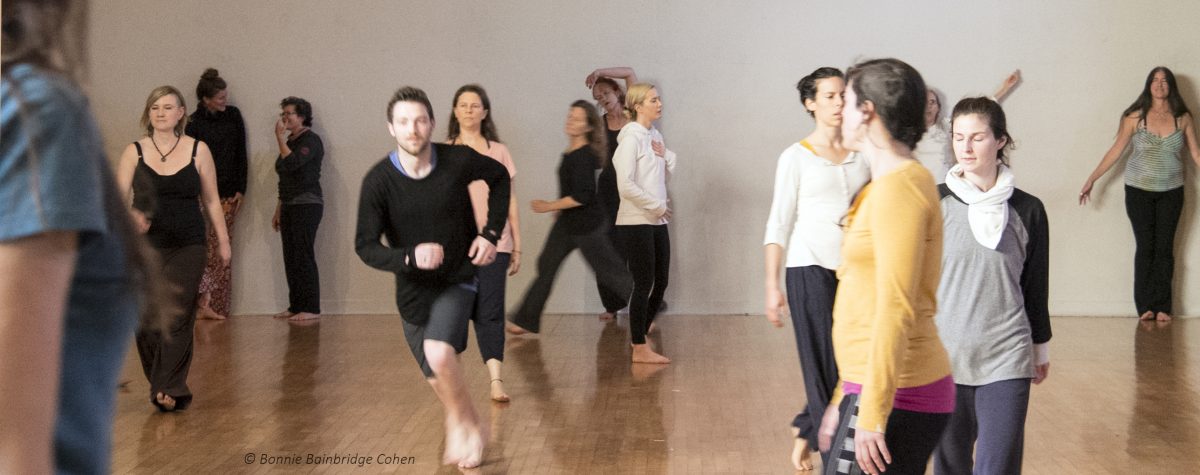
© Bonnie Bainbridge Cohen
Question
I just finished many of your fantastically, informative videos in a row. I confused myself with something you said about change and perception… without change, perception won’t change? Is that right? Working with stuck patterns of movement.
Your teachings inspire new movements. As I practice them, my muscles and bones of my pelvic diaphragm take on new positioning, my pliés are completely different.
What comes first, perception or change of movement pattern? Am I on the right track?
Bonnie
The proverbial question, “Which comes first, the chicken or the egg”?
Something I read in the 1970s changed my perception. It stated that motor nerves myelinate before sensory nerves. The sequence of myelination (coating of the nerves for insulation) indicates their functional sequence. This was a surprise to me! I had been for many years engaged in the practice of noticing my sensations to change my movement patterns. How could both of these be true?
Because I was also studying the development of movement and perception, including working with babies (some with challenging brain dysfunction), I presented this paradox to them. In order for them to perceive something, they had to experience it. How could I offer them an experience in such a way that they would perceive it as their own initiative – an internal awareness of their own movement rather than an awareness that I was moving them? In that way they could myelinate their motor nerves, to then myelinate the sensory experience of their expanded movement possibilities.
This also became clearer when I worked with adults with spinal cord injuries. When through touch, I stimulated their internal fluid rhythm and organ movement, they could soon initiate movement through their skeletal muscles (below the spinal cord injury) that was previously not possible. However, it took several months before their skeletal and muscular sensory awareness of these movements returned. The key was awareness of internal movement before skeletal movement through space. Skeletal movement through space brought muscular awareness of the movement.
Through touch, verbal somatization, and practices of self awareness, our internal fluid and cellular processes change. This transforms our outer motor responses and provides fresh cellular/fluid and muscular sensory feedback of our movement.